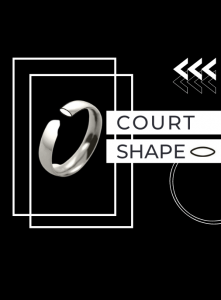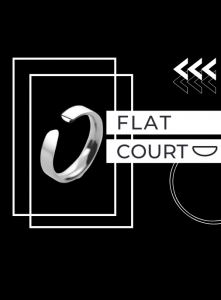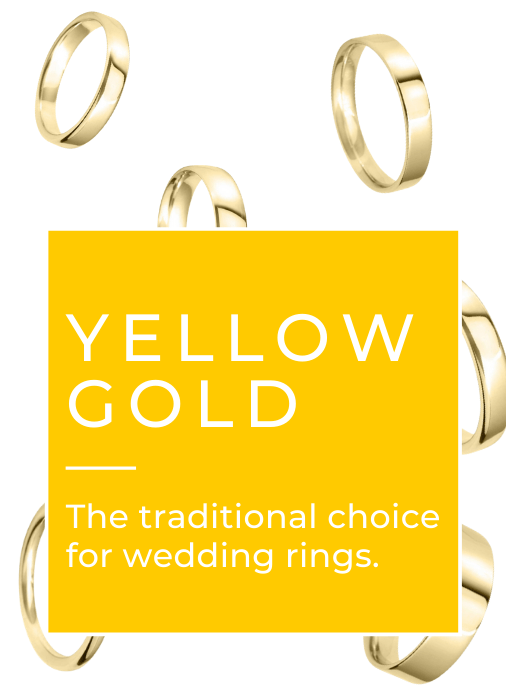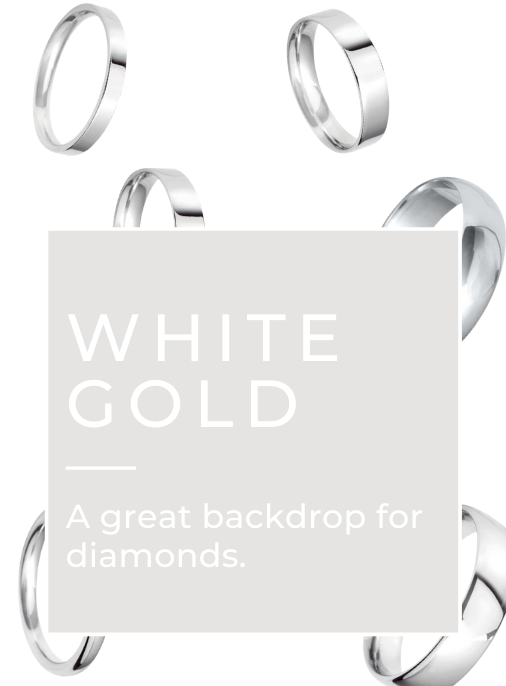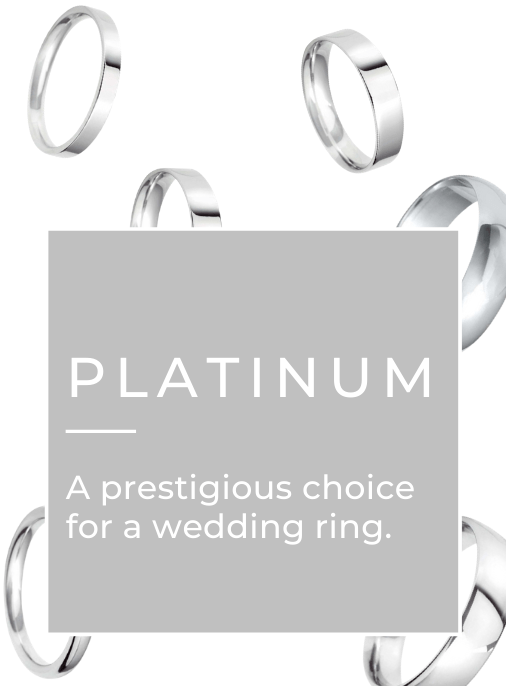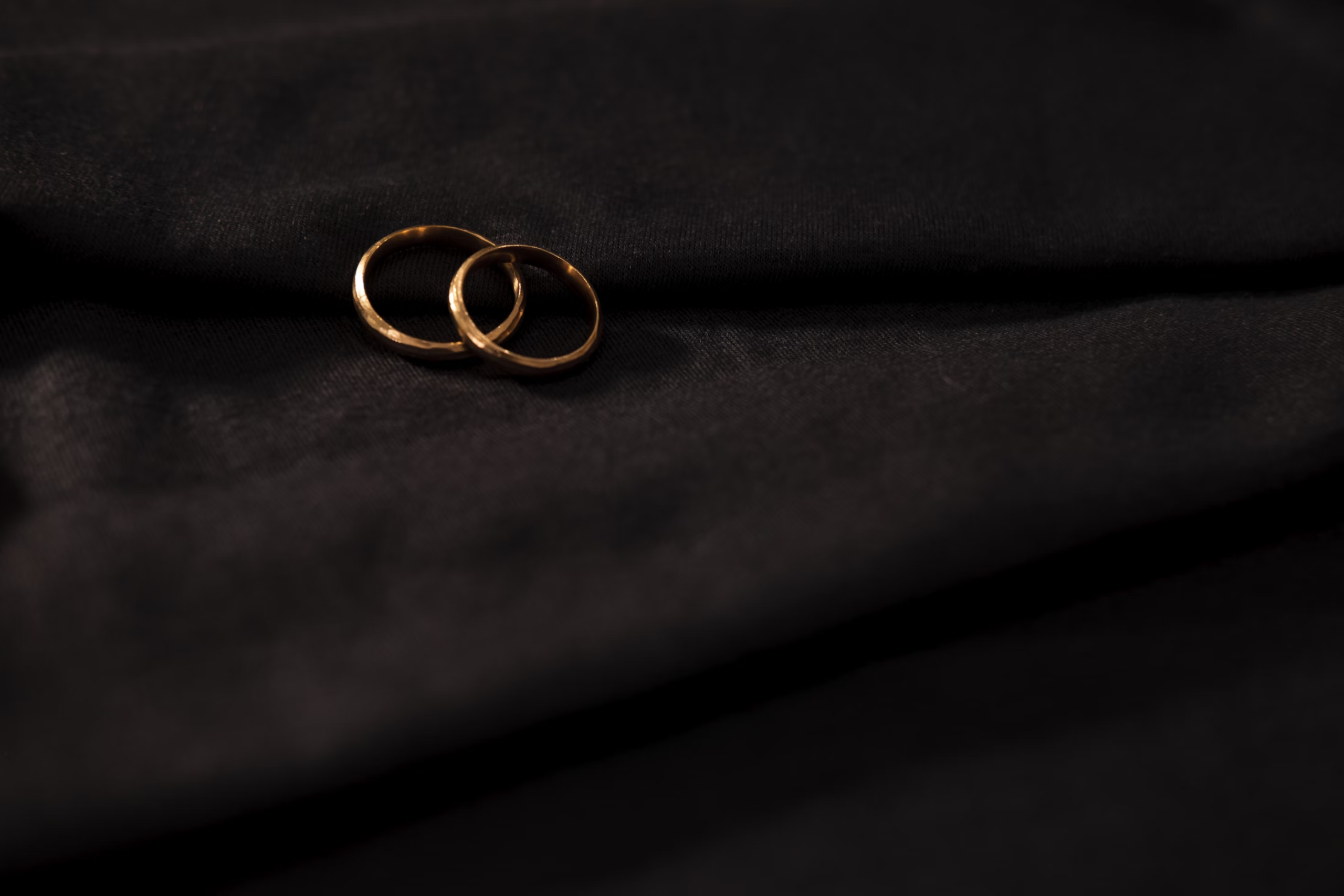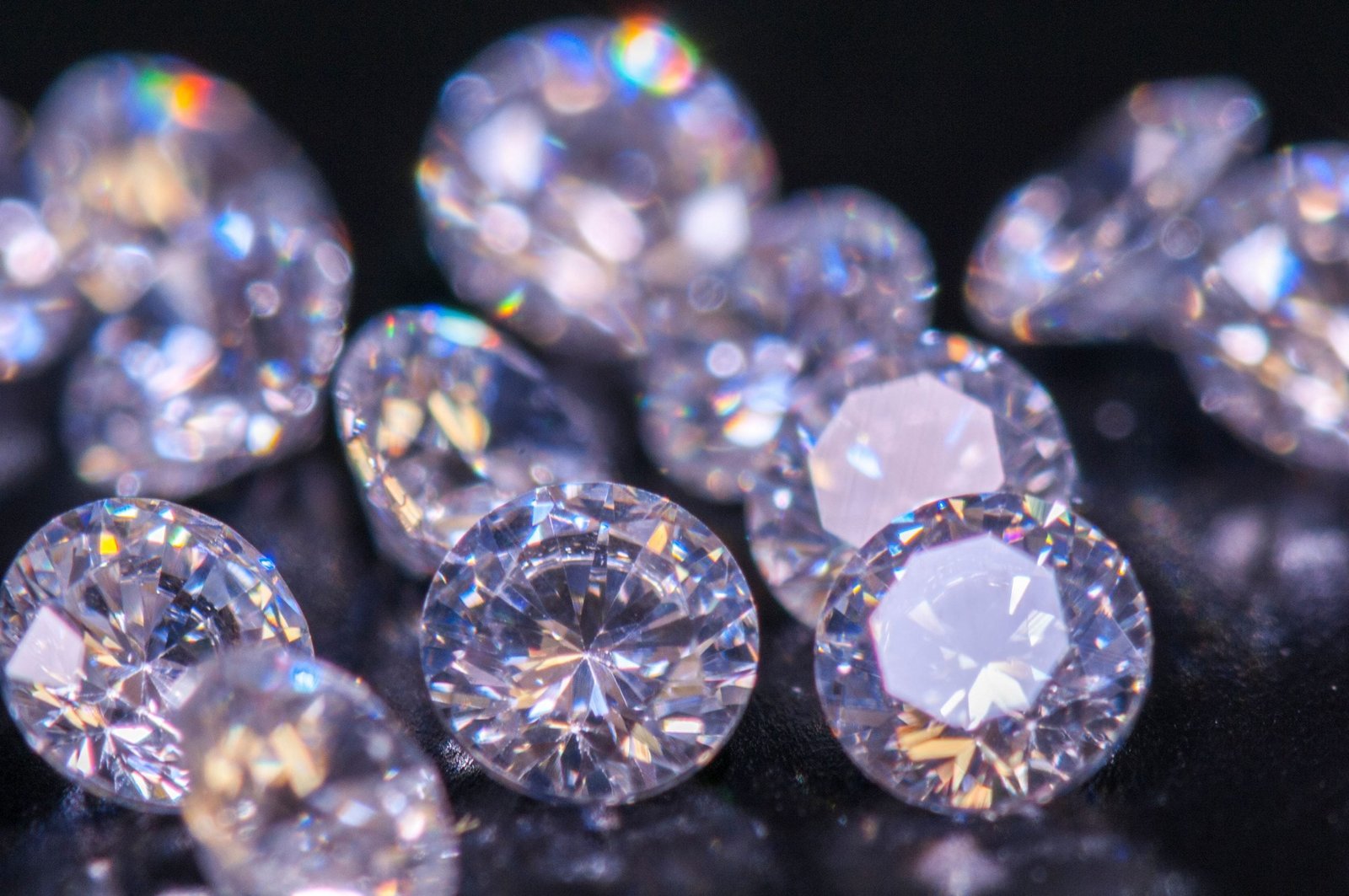
Different Types of Wedding Rings: A Comprehensive Guide
Wedding rings are more than just jewellery—they represent love, commitment, and the shared journey between two people. Over the centuries, different types of wedding rings have emerged, each symbolising unique aspects of marriage and personal style.
From choosing the best type of wedding ring for a man to exploring timeless designs, metals, and gemstones, this guide will walk you through everything you need to know about finding the perfect ring. Whether you’re drawn to classic styles or searching for the best type of men’s wedding ring, we’ll cover all the different types of wedding rings to help you find a ring that beautifully reflects your story and values.
A Brief History of Wedding Rings
The tradition of exchanging wedding rings dates back thousands of years and crosses multiple ancient civilisations. One of the earliest recorded uses of rings as symbols of love and commitment can be traced to the ancient Egyptians, who crafted bands from braided reeds, symbolising eternal love and unity. They believed that circles, with no beginning or end, represented eternity.
Roman Influence
As the tradition spread, the ancient Romans adopted the practice, often using rings made of iron to signify strength and permanence. For the Romans, the fourth finger of the left hand was believed to have a direct connection to the heart, known as the “vena amoris” or “vein of love.” This idea added a romantic layer to the custom, which has persisted to this day in many cultures. Rings became more than a pledge of loyalty—they were a physical connection to one’s beloved.
The Middle Ages
During the Middle Ages, wedding rings took on more ornate forms. Nobles and royalty wore rings adorned with gemstones, such as sapphires, believed to reflect the heavens. The inclusion of gemstones also signified wealth and social standing, with each stone often chosen for its symbolic meaning. During this period, betrothal rings evolved, bearing messages of love and devotion in elaborate scripts or engraving, which added a highly personal element to each ring.
The Modern Era
In the modern era, wedding rings have become highly customisable and reflect individual personalities and tastes. Couples today can choose from a variety of metals, gemstones, and designs, incorporating their personal style and values. From traditional gold bands to eco-friendly materials and unique settings, wedding rings now serve as both timeless symbols of love and personal expressions of style. The beauty of today’s wedding rings lies in their diversity, as they continue to represent love while allowing couples to express their uniqueness.
The Importance of Choosing the Right Wedding Ring
Selecting the perfect wedding ring is more than just a choice of jewellery. It’s a deeply personal decision, one that reflects your relationship, style, and values. While aesthetics matter, a wedding ring should also be comfortable, durable, and suited to your lifestyle, as it will be worn daily. Here are some key reasons why thoughtful selection is essential:
A Lasting Symbol
Your wedding ring serves as a daily reminder of your commitment and love. It symbolises the vows you’ve shared with your partner and holds immense sentimental value.
Personal Expression
A wedding ring should reflect who you are. Whether you prefer a minimalist band or a more elaborate style, your choice can embody your personal taste and story.
Comfort and Wearability
Beyond appearance, comfort is crucial. A well-fitted ring ensures you can wear it all day without discomfort. Exploring different materials and profiles can help you find the perfect match for daily wear.
Classic Wedding Ring Styles
There are different types of wedding rings to suit every style, from simple bands to elaborate designs with gemstones. Choosing the best type of wedding ring means finding a balance between aesthetics and comfort.
Classic Wedding Ring Styles for Men
When it comes to finding the best type of men’s wedding ring, styles like solitaire and three-stone rings are popular choices. The right ring reflects personality while offering lasting comfort.
Solitaire Rings
The solitaire ring, often featuring a single diamond, conveys a simple yet elegant look. This style is popular among grooms who appreciate clean lines and understated sophistication.
Three-Stone Rings (Trilogy)
This design features three stones, often symbolising the past, present, and future of a relationship. With its deeper meaning and eye-catching appeal, the three-stone ring is perfect for men who want a unique twist on the traditional band.
Cluster Rings
Cluster rings comprise several smaller stones set closely together, creating a striking, brilliant effect. This style is ideal for those who enjoy a bit of sparkle but prefer a subtler presentation than a single large stone.
Classic Wedding Ring Styles for Women
Women’s wedding rings offer a beautiful canvas for creativity and personal expression. From traditional bands to ornate designs, the options are nearly endless, allowing each bride to find the perfect ring that suits her style and preferences. Here are some timeless styles popular among brides:
Plain Metal Wedding Rings
A plain band, typically in gold, platinum, or silver, remains one of the most classic choices. This simple design appeals to brides who favour elegance and subtlety, as it pairs well with any engagement ring and maintains its allure over time. Plain bands are also versatile, allowing the bride to customise with engravings or mix metals for a unique twist.
Full Diamond Wedding Bands
For those who adore sparkle, a full diamond wedding band is an exquisite option. These rings are set with diamonds around the entire circumference, creating a continuous shimmer that complements many engagement ring styles. This luxurious design adds a radiant touch, symbolising an unbroken circle of love.
Double Row and Five Row Diamond Bands
Multi-row diamond bands are perfect for brides who enjoy bold, glamorous styles. With two, three, or even five rows of diamonds, these rings provide added depth and a brilliant display of light. They are a wonderful choice for those who wish to make a statement with their wedding jewellery.
Crossover and Curved Diamond Wedding Rings
Crossover bands and curved rings offer a more intricate design, often crafted to sit alongside an engagement ring in a way that enhances its beauty. These styles add a romantic touch, with curves and twists that create an elegant silhouette on the finger. Perfect for brides who appreciate unique detailing, these bands allow for a harmonious, custom-fitted look with an engagement ring.
Wedding Ring Profiles
The profile, or shape of a wedding ring, plays a crucial role in its comfort and overall look. Different profiles create distinct styles and feels, so choosing one that suits your preference and lifestyle can make wearing your ring more enjoyable.
If you’re wondering what type of wedding ring you should get, considering the profile is a great place to start. Options like court, flat, and D-shaped profiles offer unique benefits in both style and comfort. Here’s a look at some of the most popular profiles for both men and women:
Court Shaped Rings
Court-shaped rings, also known as “comfort fit” rings, feature a rounded interior and exterior, making them smooth and comfortable to wear. This classic shape is popular among those who value tradition and comfort, as the gentle curve on the inside reduces the chance of rubbing or discomfort.
- Ideal for: Those who want a traditional, comfortable ring that is easy to wear daily.
- Pros: Comfortable fit, classic design.
- Cons: May appear thicker on the finger compared to flatter profiles.
Flat Court Rings
Flat court rings have a sleek, modern appeal with a flat exterior and interior surface, creating a more contemporary look. The simple, structured shape makes a statement, appealing to those who appreciate minimalism and a bolder aesthetic.
- Ideal for: Individuals who prefer a modern, minimalist style.
- Pros: Sleek design, sturdy feel.
- Cons: May feel less comfortable for those not used to a flat fit.
D-Shaped Rings
D-shaped rings have a flat interior and a rounded exterior, resembling the letter “D” when viewed in cross-section. This shape combines comfort with a structured look, offering a timeless choice that’s slightly more substantial than the court shape.
- Ideal for: Those who want a comfortable ring with a classic, refined appearance.
- Pros: Comfortable fit, timeless look.
- Cons: Slightly bulkier on the finger than other profiles.
Barrel Rings
Barrel rings, also known as “comfort court” rings, have a rounded, barrel-like shape with a wider middle and tapered edges. This design offers a bold look while retaining comfort, making it a popular choice for those who want a more distinctive, yet wearable style.
- Ideal for: People who want a standout ring with a unique shape that’s still easy to wear.
- Pros: Unique profile, comfortable to wear.
- Cons: May appear wider on the finger, which may not suit everyone.
Precious Metals for Wedding Rings
The metal you choose for your wedding ring greatly influences its look, feel, and longevity. Each metal has unique properties that can affect its durability, maintenance, and overall appearance. Here’s a look at some of the most popular precious metals and what makes each one special.
Platinum
Platinum is often regarded as one of the finest metals for wedding rings. Known for its natural silvery-white hue, platinum is both strong and hypoallergenic, making it ideal for individuals with sensitive skin. Its density and durability also make it resistant to wear and tarnish, so it holds up well over time with minimal maintenance.
- Strength: Incredibly durable, ensuring gemstones remain secure in their settings.
- Hypoallergenic: Ideal for those with metal sensitivities.
- Maintenance: Unlike white gold, platinum doesn’t need re-plating, though occasional polishing can help retain its shine.
Choosing a platinum wedding ring is an excellent investment for those seeking a high-quality metal that will stand the test of time, both in durability and elegance.
Gold Varieties
Gold is a classic choice for wedding rings and is available in several varieties, each offering unique aesthetic qualities and characteristics. The purity of gold is measured in carats, with 24 carats representing pure gold. For rings, 18ct and 14ct are popular, as they offer a balance between durability and luxury.
- Yellow Gold: The traditional choice, yellow gold rings symbolise warmth and love. They’re available in various carats, and their rich hue has timeless appeal.
- White Gold: Formed by alloying yellow gold with white metals like palladium or nickel, white gold rings offer a sleek, modern look. These rings require periodic rhodium plating to maintain their brightness, as it can yellow over time.
- Rose Gold: Rose gold rings have gained popularity for their romantic, blush-toned appearance, achieved by adding copper to yellow gold. They’re durable and have a unique charm, making these rings ideal for those who want a softer, warmer look.
Gold is a versatile option that offers different colours and carat choices, allowing couples to find the right fit for their style and budget.
Alternative Metals
For those who want a modern twist on tradition, alternative metals offer exciting choices beyond the usual precious metals. They provide durability and unique aesthetics that may better suit an active lifestyle or a distinct look.
- Palladium: A member of the platinum family, palladium has a similar silvery-white appearance but is lighter and more affordable. It offers strength and a beautiful finish with low maintenance.
- Titanium: Known for its strength and lightweight feel, titanium is both hypoallergenic and scratch-resistant, making it ideal for those with active lifestyles. Its matte finish gives it a modern, understated look.
- Sterling Silver: While less traditional for wedding rings, sterling silver is a budget-friendly option with a polished finish. However, it’s softer and more prone to scratching, so it may require more frequent maintenance.
Diamonds and Gemstones for Wedding Rings
Gemstones add character and beauty to wedding rings, with diamonds being the most popular choice for their durability and timeless appeal. However, coloured gemstones are also gaining popularity as couples look for unique ways to express their personalities. Here’s a closer look at diamond qualities, coloured gemstone options, and setting styles to help you select the perfect gemstone for your wedding ring.
Diamond Qualities: The Four Cs
Choosing a diamond can feel overwhelming, but understanding the Four Cs—cut, clarity, colour, and carat—can make the process simpler. Each of these factors affects the appearance, quality, and price of the diamond.
Cut
The cut of a diamond refers to how well it has been shaped and faceted to reflect light. A well-cut diamond will sparkle brilliantly, with round cuts being the most traditional choice for wedding rings. Other popular cuts include princess, oval, and emerald.
Clarity
Clarity measures the presence of internal or external flaws (known as inclusions and blemishes). Diamonds with fewer inclusions are more valuable and allow for greater light reflection, creating a clearer sparkle.
Colour
Diamond colour is graded from D (colourless) to Z (light yellow or brown). Colourless diamonds are the most sought-after, although diamonds with slight colour can offer a warmer appearance at a lower price point.
Carat
Carat refers to the weight of the diamond. While larger diamonds are more expensive, carat weight alone doesn’t determine value; a smaller, well-cut diamond can be more brilliant than a larger one with poor clarity or cut.
Popular Coloured Gemstones
For those seeking something unique, coloured gemstones offer an eye-catching alternative to traditional diamonds. Each gemstone carries its own symbolism and appeal, allowing couples to choose a stone with personal significance.
Sapphire
Known for its rich blue hue, sapphire symbolises wisdom and loyalty. It’s also highly durable, making it an excellent choice for a wedding ring.
Emerald
With its vibrant green colour, emerald represents growth and harmony. While slightly softer than diamonds and sapphires, it can still be a beautiful and meaningful choice.
Ruby
Ruby’s bold red colour represents passion and love, making it a fitting choice for a wedding ring. Rubies are relatively hard, which makes them suitable for everyday wear.
Using coloured gemstones is a great way to personalise your ring and add a unique touch that reflects your personality or the meaning behind your relationship.
Settings for Wedding Rings
The setting of a gemstone affects both its appearance and security. Some settings highlight the stone’s brilliance, while others offer more protection. Here are some popular setting styles for wedding rings:
Prong Setting
Prong settings hold the gemstone in place with metal claws, allowing for maximum light to enter and enhance the stone’s sparkle. This classic setting is popular for both diamonds and coloured gemstones.
Channel Setting
In a channel setting, gemstones are set closely together in a channel within the band, creating a continuous line of sparkle. This style is ideal for wedding bands and provides additional protection for the stones.
Bezel Setting
A bezel setting encircles the gemstone with a metal rim, offering a sleek, modern look and excellent security. This setting is particularly suited to active lifestyles, as it protects the stone from damage.
Personalisation Options for Wedding Rings
Follow Us
Table of Contents
- A Brief History of Wedding Rings
- The Importance of Choosing the Right Wedding Ring
- Classic Wedding Ring Styles
- Wedding Ring Profiles
- Precious Metals for Wedding Rings
- Diamonds and Gemstones for Wedding Rings
- Personalisation Options for Wedding Rings
- Practical Considerations for Choosing a Wedding Ring
- Care and Maintenance of Wedding Rings
- Cultural Variations in Wedding Ring Traditions
- Trends for Wedding Rings
- How To Choose the Perfect Wedding Ring
- Where To Buy
More Guides
26 Minute Read

